Old tradition, youthful vibe
Writer: Son Yingwen | Editor: Zhang Chanwen | From: Shenzhen Daily | Updated: 2023-04-24
A+ A- Print
“So who is this North Deity? Why are so many people celebrating his birthday?” A crisp and singsong voice from a young onlooker broke the sudden silence that fell upon a parade team during an unexpected halt of the deafening drum and gong beats and caught the attention of many. One second ago, three cheerful costumed lions, followed by a team of performers in colorful folk dresses, were hopping, rolling and chasing their tails mischievously to the strong drum beats and loud cheers from the crowds that had packed the winding street in front of the North Deity Temple in Xixiang, Bao’an, Shenzhen. People within arm's reach smiled to each other, and the bewildered shy boy buried his face in the dress of his mother.
It was a sun-drenched April noon, and Xixiang was celebrating perhaps the biggest occasion other than the Spring Festival in the community — a nine-day temple fair that honors the birth of the North Deity, or Pak Tai as known in Southeast Asia.
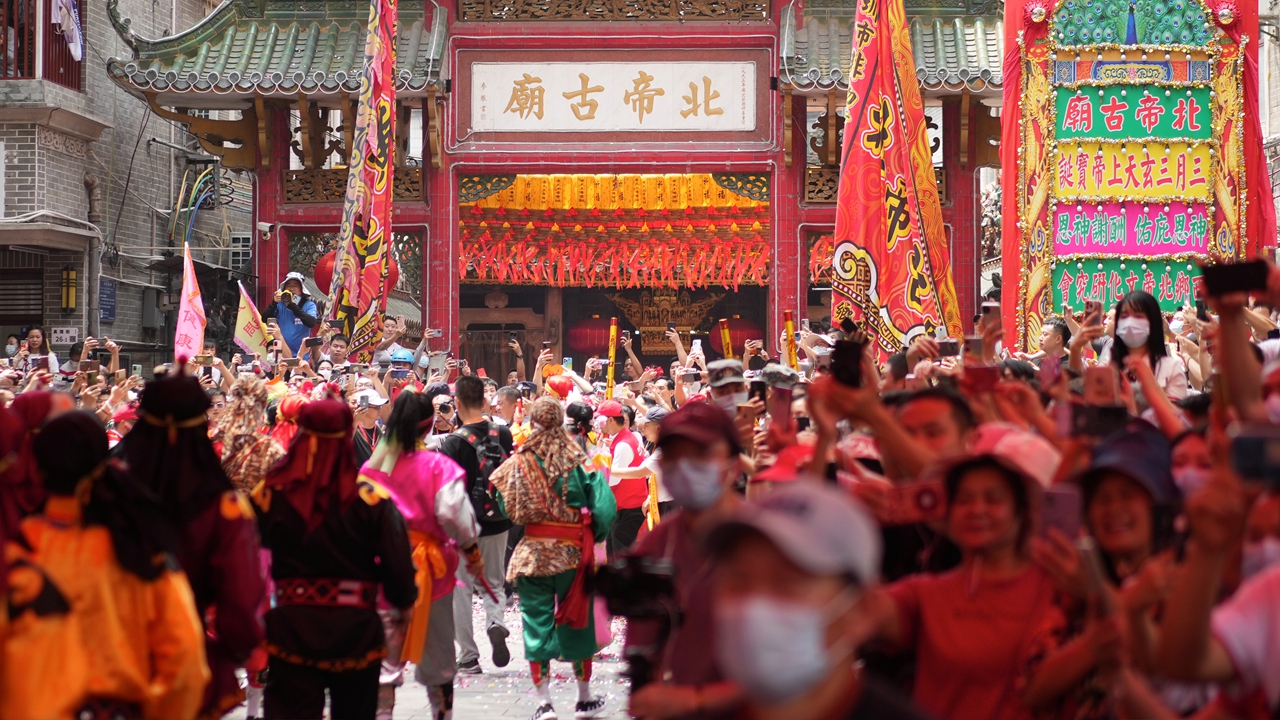
Performers and audience gather at the North Deity Temple to watch the Xixiang temple fair parade. Photos by Liu Xudong except otherwise stated
The North Deity is celebrated in Xixiang due to his connection to water. People in southern China worship the deity because water that people rely on for cultivation and fishing is brought by rivers that run from the north. If the rivers are calm and well-regulated, farmers and fishermen will have good harvests. The North Deity Temple in Xixiang enjoys a history of around 500 years.
The birth anniversary of the North Deity is usually celebrated on Sanyuesan, the third day of the third month in the lunar calendar, which falls on April 22 this year. In Xixiang, this tradition has evolved from a one-day worshiping ceremony to a nine-day celebration that involves lively deity parades, rousing kylin and lion dances, a lavish pun choi feast, popular Cantonese opera performances, and a grand food and folk art gala that runs throughout the event. This year, the temple fair began April 17 and will run through tomorrow.
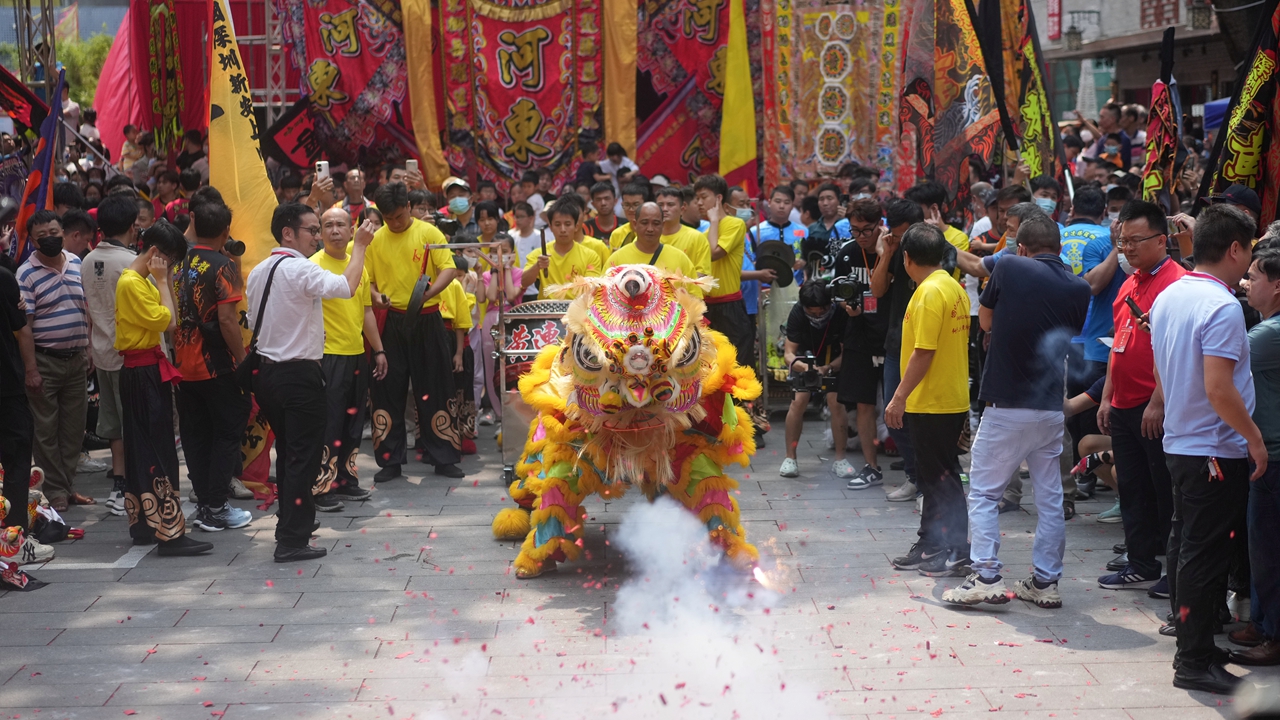
A lion troupe performs the lion dance at the North Deity Temple on Sunday.
The Sanyuesan Temple Fair of the North Deity Temple in Xixiang is now the largest of its kind in Shenzhen and was listed as an intangible cultural heritage item of Guangdong Province in 2022.
A folk art carnival
This year’s temple fair celebration is exceptionally grandiose and impressive. “The influence of the event is growing. This year’s celebration is nothing like what we had before,” villager Lin Guanghua said.
Over 100 teams participated in the grand deity parade April 17, almost twice the number of the attending teams last year. Among them were Guangdong’s State-level intangible cultural heritage items Meilin Piaose (an art form featuring young models dressed up as characters from historical stories or fairy tales who are held aloft on hidden poles), a Chaozhou-style gong and drum band performance, and the latest internet sensation, Yingge dance.
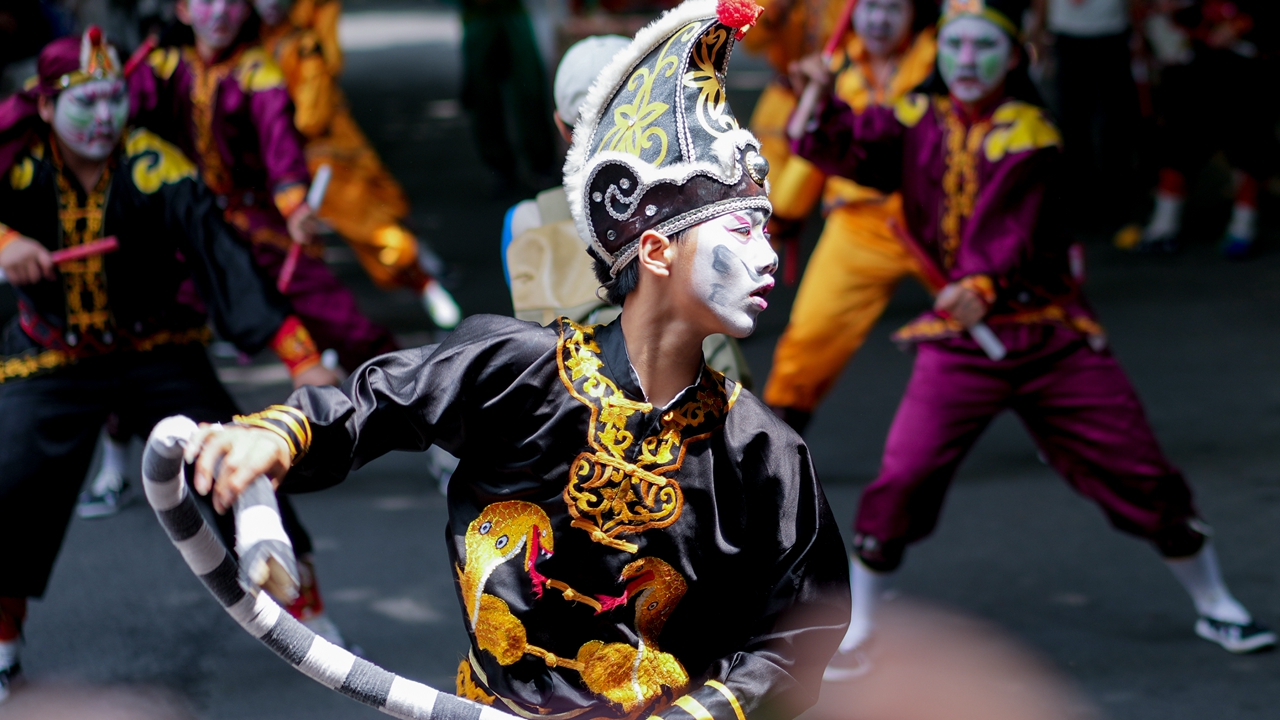
A Yingge Dance team in the parade.
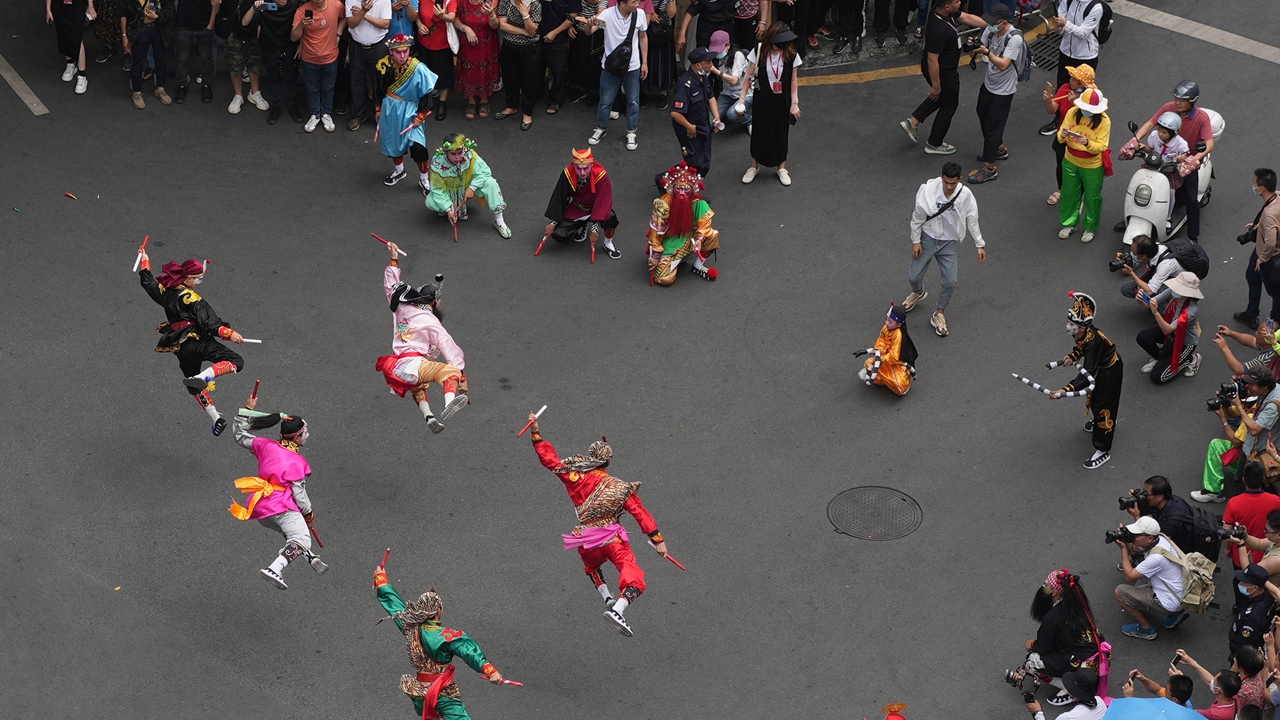
Yingge Dane performers from Puning, Guangdong, stage a show during the parade.
“We reached out to these teams and invited them to bring their mesmerizing performances to Xixiang. Their performances really set the pulse racing, didn’t they?” said Huang Zhenji in an exciting hoarse voice after the opening parade. Huang, who is the person in charge of this year’s temple fair, has spent the past four months working with the government and his community peers to prepare for it.
“The purpose is to get more people involved, performers as well as visitors,” he said.
A well-orchestrated plan had extended the parade route from last year’s 1.4 kilometers to 4 kilometers, linking major cultural and historic sites in Xixiang such as the North Deity Ancient Temple, the ancestral hall of Qing official Wang Lairen, the Qiyun Academy built in 1885 and Xuantan Ancient Temple.
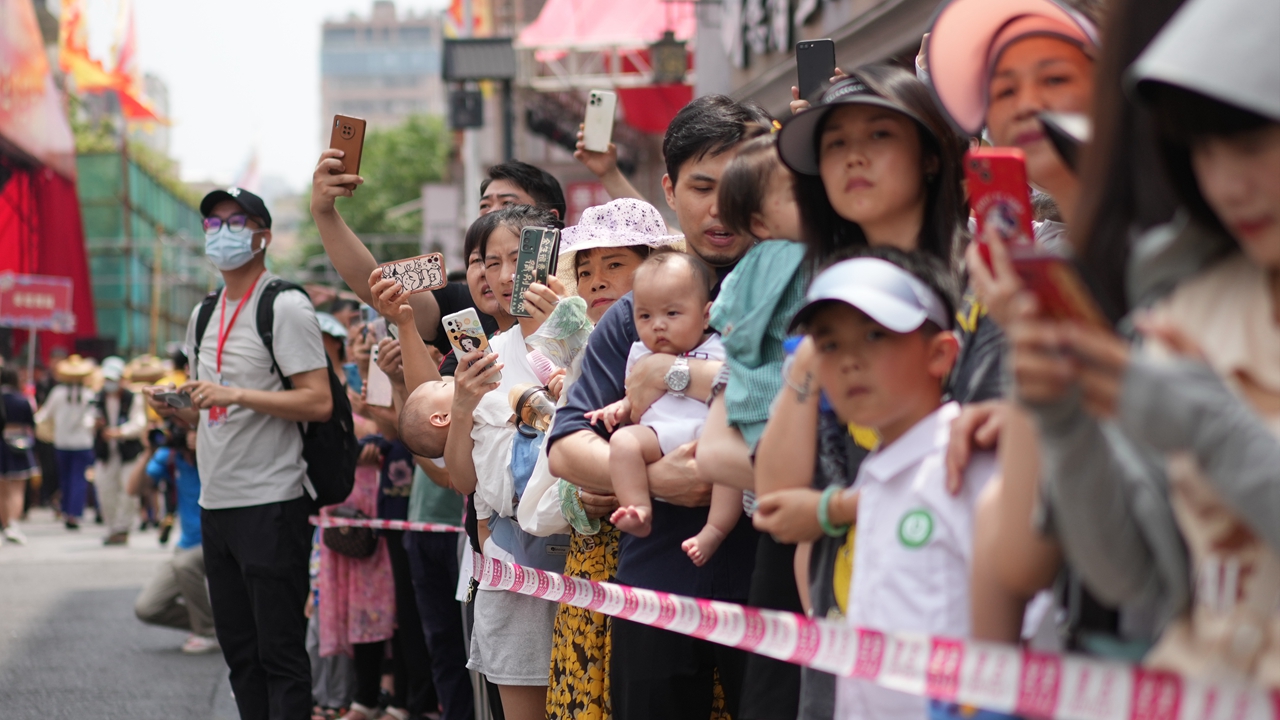
Onlookers wait for the arrival of parade troupes on a street in Xixiang on April 17.
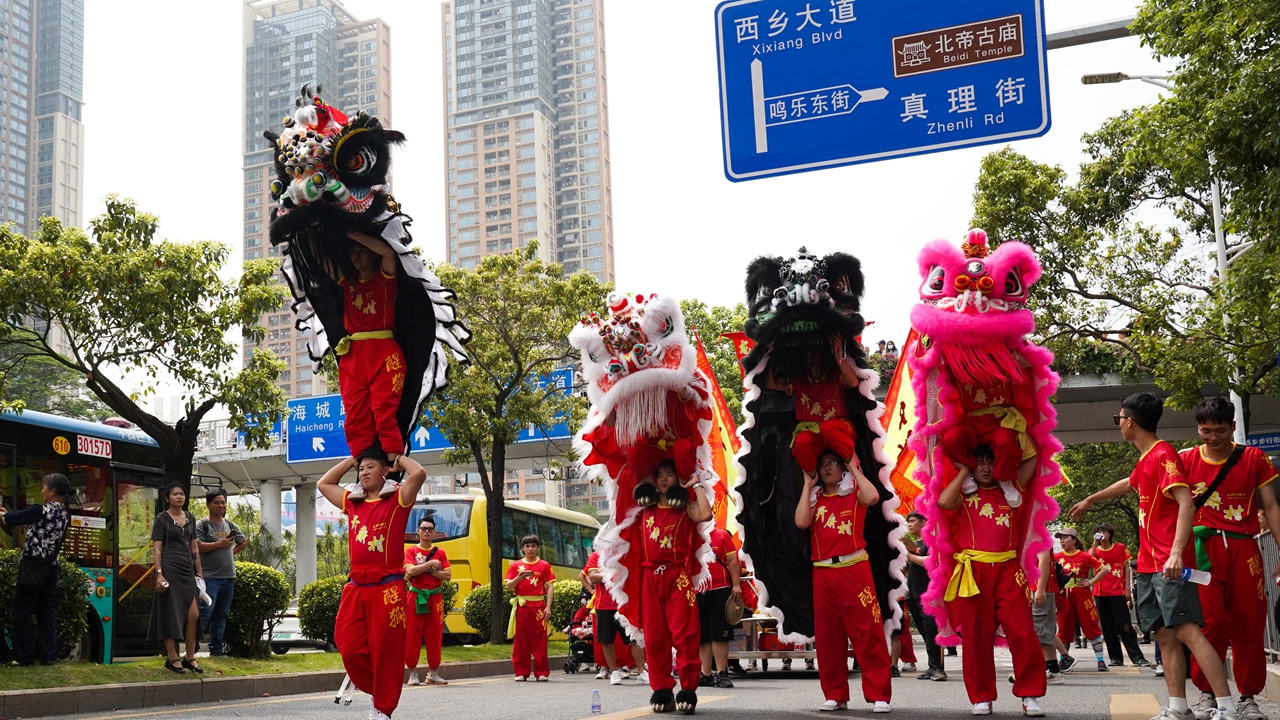
A lion dance performance during the parade on April 17. Wang Haolan
In the following days, around 30 events ranging from traditional Cantonese operas to modern concerts and model plane air shows will continue to take center stage. The climatic event was Saturday’s ceremony of welcoming the return of the North Deity statue to its temple seat and the annual ritual of a roast suckling pig sacrifice.
The grand show has attracted a large number of visitors, both online and offline. Statistics revealed by the organizer said that more than 2 million people have visited the temple fair in the first six days, 500,000 of whom participated and watched the opening parade. More than 4 million people watched the live-stream of the parade on the first day, and online reports about the temple fair have so far attracted over 600 million readers.
Living traditions
The local government has made a huge investment in reviving the cultural heritages in Xixiang, according to He Chunlian, the person in charge of the mass culture sector of Xixiang’s Public Cultural and Sports Service Center. Starting from a regional traditional worship ceremony, it took 12 years for the temple fair to make headway to become a provincial-level intangible cultural heritage item. Every year, a multi-million-yuan special fund is poured into the preservation and revitalization of intangible cultural heritage and relics protection in the community, and the amount has been growing every year. The investment goes into exploring potential cultural heritage items, repairing damaged historic sites and facilities, as well as to mobilize partners for and enhance the impact of the time-honored traditions.
Cultural heritage does not end at monuments and collections of objects. While intangible cultural heritage items include traditions and living expressions inherited from our ancestors and passed on to our descendants, local officials are fully aware that the involvement of people is essential.
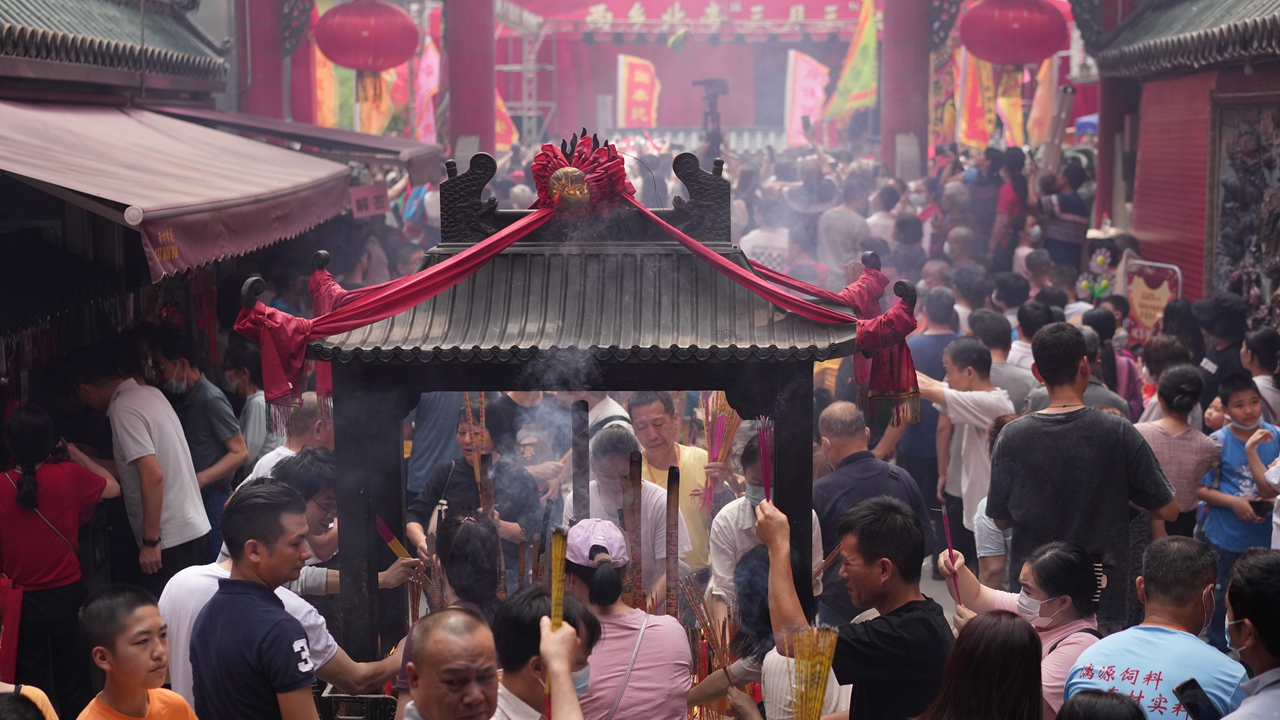
Temple visitors holding burning incenses pray at the North Deity Temple in Xixiang on Sunday.
The April 17 pun choi banquet was a highlight of the temple fair. More than 1,000 tables were set up in the streets, accommodating more than 10,000 people to share sumptuous “basin dishes” with friends and family. Cooking pun choi requires a lot of work among villagers, which unites them together. According to Li Bao, a Xixiang native in charge of the preparation of this year’s dinner feast, more than 400 people worked as volunteers and helped prepare the food.
The annual banquet is not only a gathering for locals, but also a major pull for their family members living in Hong Kong and Macao. This year’s temple fair has attracted hundreds of Xixiang natives who are currently living in Hong Kong and Macao.
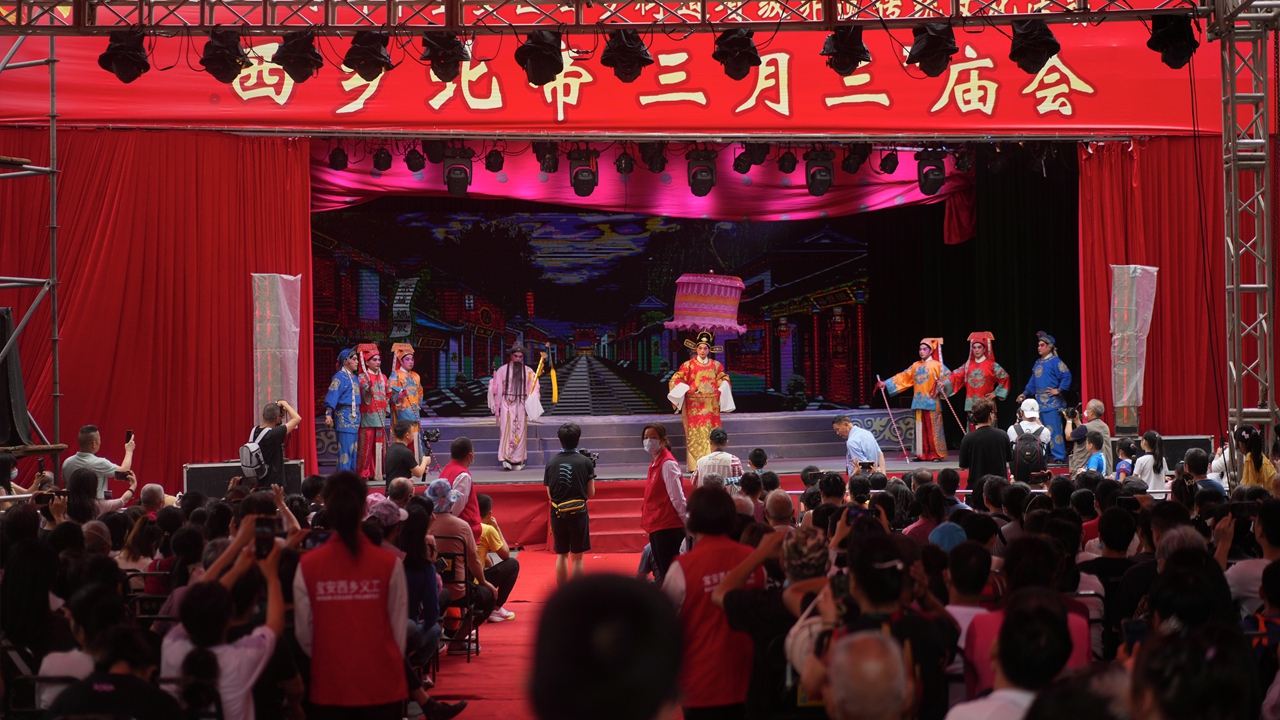
Cantonese opera performers entertain visitors at the North Deity Temple on Sunday.
“People these days may choose different ways for their Chinese New Year celebration rather than returning to their hometowns. But when it comes to the temple fair and pun choi dinner, many Xixiang natives living in Hong Kong and Macao won’t hesitate to join in. It’s like an event that reflects family lineages,” said Huang.
For attendees from Hong Kong and Macao, this event serves as both a balm to ease their longing for their hometown and past, and a portal to the present. “It’s exciting to see a prosperous Xixiang. It is also heart-warming to see our traditions being passed on. It feels like we still share common roots in this place,” said Cai Zhirong, a Xixiang native who has been living in Hong Kong but returns to the temple fair every year.
The efforts to carry on the living traditions also include cultivating the younger generation to become inheritors.
Raised in a family that has helped preserve the tradition of North Deity worship in Xixiang, the 30-something Huang is in the process of becoming the forth-generation certified inheritor of the intangible cultural heritage temple fair. While his grand grandmother and grandfather protected and restored the temple and statues, Huang and his uncle, the third-generation inheritor Huang Zhenguang, has been working with local authorities and leading the community to rediscover and revive the worshiping rituals.
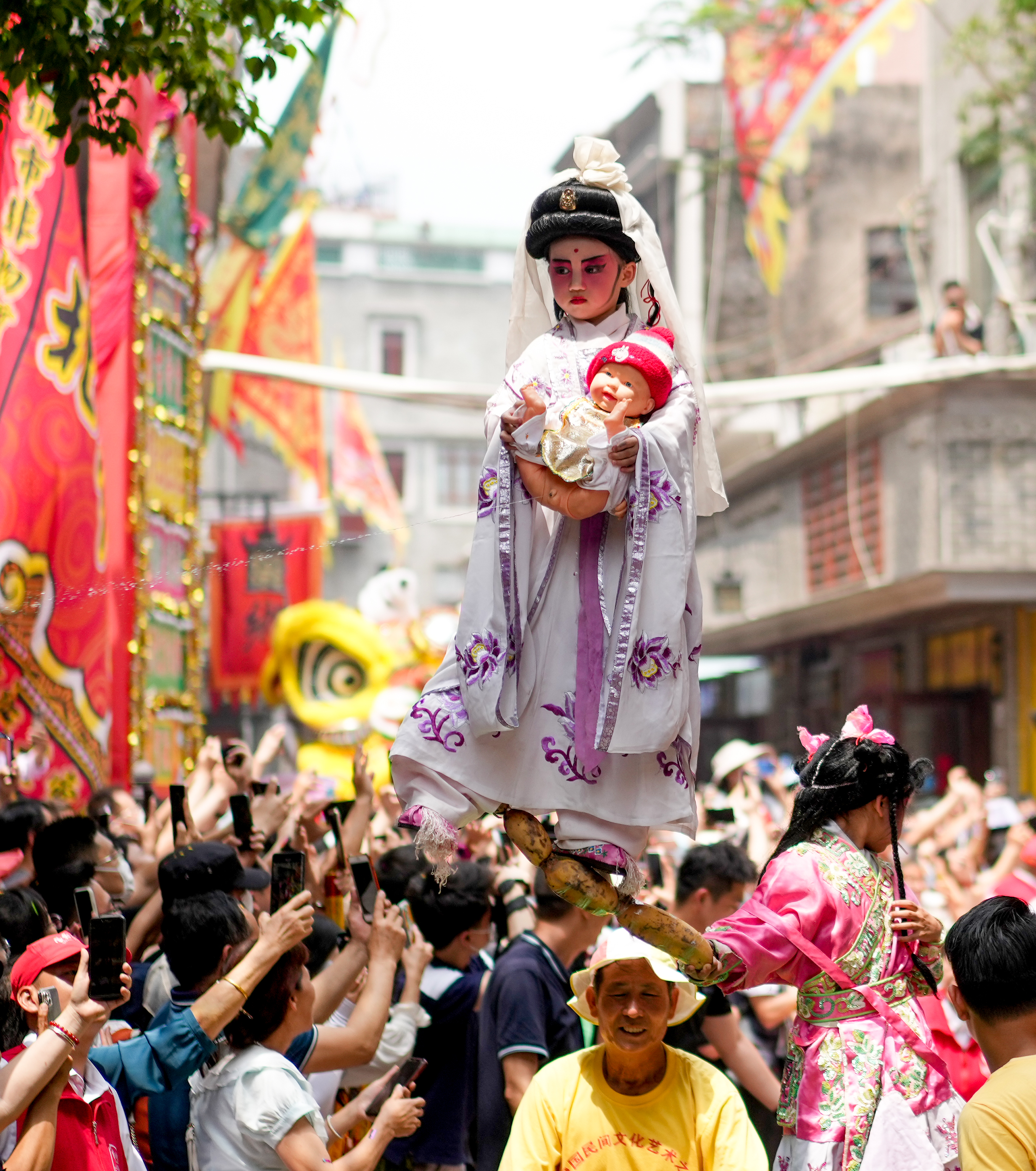
Young Piaose performers receive welcoming cheers from onlookers during the parade.
This energetic Xixiang native said he gained a fresh view on the tradition of worshiping North Deity in 2017 after participated in organizing the temple fair that year. The young man was in a gap year from his previous job, and the experience prompted him to take on the new role as an intangible cultural heritage inheritor.
“I found my respect for the tradition of worshiping the North Deity, and it feels like I found a link between my ancestors and me,” he said. “Besides, the fragile, intangible cultural heritage is an important factor in maintaining cultural diversity in Shenzhen.”
Huang’s initiatives to revive the heritage include setting up a foundation for the research on North Deity worship and the temple. The foundation, more like a platform, enables intercultural dialogues between different communities and brings about cooperation and exchanges.
Looking at the huge crowds in the North Deity Temple, He Chunlian said it was always moving to see this spontaneous gathering being carried on year after year. Also a Xixiang native, this middle-aged official has been taking part in the annual celebration since he was young, first as an onlooker, now as an organizer. “In my opinion, carrying on cultural practices like this temple fair is like protecting the spiritual ‘root’ of the people living here. Temples can serve as spiritual shelters for people for generations, and traditional practices are ways that lead us to the soul of our culture.”
So who is the North Deity? To our ancestors, it might be the mythical power that brings people assurance of safety and prosperity. Perhaps to people today, it’s more like a spiritual root that can always provide a link to our past, through the present and into our future; a secret connection that encourages social cohesion and provides a sense of identity; and, even the thin red bloodline that link us with our ancestors.